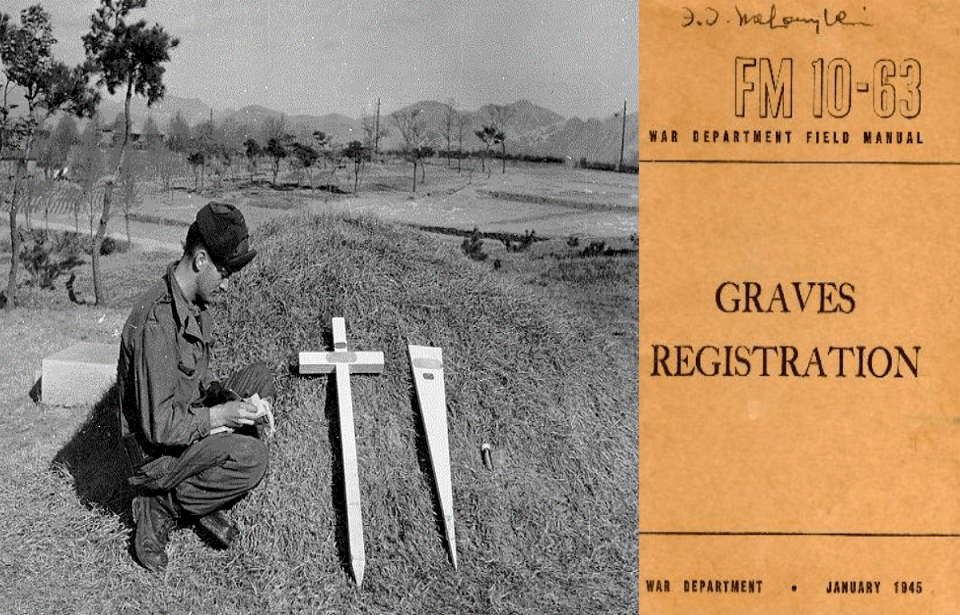During a time of war, it is all too easy to ponder the complexities of the logistics involved with manufacturing, transporting, and supplying hundreds of thousands of troops, aircraft, tanks, guns trucks, and ships. However one of the less considered problems is one of the most important: the proper handling and burial of troops.
When soldiers are killed in combat, they are usually placed in a shallow, temporary grave by their comrades. But these graves are not permanent, and the men in them must be exhumed, identified, and transported to a proper burial site.
The situation becomes much harder when a soldier’s identity can not be confirmed. The devastating weapons of modern warfare make this a common occurrence.
For the US, it was the Graves Registration Service that undertook this duty. The service was used during WWI but was deactivated once that conflict ended. In peacetime, the US used morticians to retrieve and bury the dead, but by WWII the full capabilities of the Graves Registration Service were needed once again.
Graves Registration Service
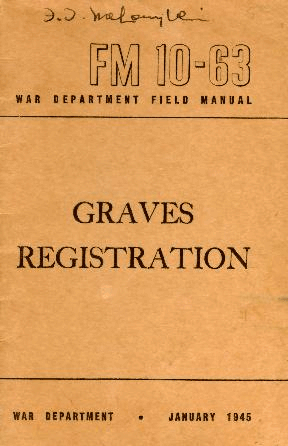
Men who were drafted into the military and likely expected to soon be fighting the Nazis were instead allocated to undertake the grim work of the Graves Registration Service. One such unit was the 612th Graves Registration Company, which was assembled and trained in the run-up to D-Day.
The men were picked from the same pile as the average infantry soldiers but were given unique training to prepare them for their unique job. They witnessed autopsies, assembled mock-up cemeteries, and performed burials.
They were sent over to England prior to D-Day so they would be ready for the high numbers of casualties planners were rightfully expecting. Before the invasion even began, a fellow graves registration unit lost 16 soldiers during a disastrous training operation off Slapton Sands, England.
But D-Day would be a baptism of fire for the men of the 612th.
D-Day
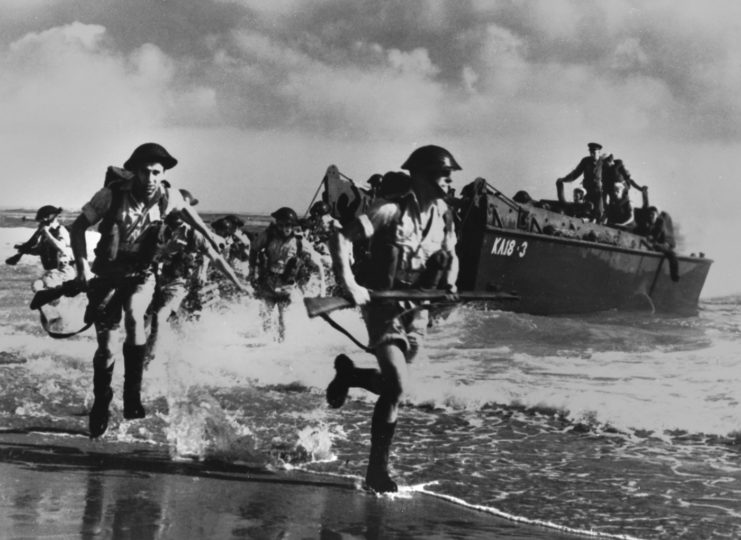
As soon as they arrived on the European continent they were overloaded with bodies. Their plans for an organized system to deal with the casualties quickly went out the window in the chaos of the invasion. Despite this, the men from the graves registration units managed to establish make-shift cemeteries marked out with ration crates. These were quickly filled up by the constant stream of bodies arriving at their feet.
Parachutes were used to wrap the bodies, and French locals were paid to help with the digging.
Some of the worst jobs for these units on D-Day were on the beaches. The beaches were covered in corpses, some left where they fell and others were carried onto the shore by the tides. Men from the graves registration units had to swim down and free the dismembered bodies tangled in landing craft propellers or trapped in vehicles. One of the soldiers described this particular job as “the worst experience I would ever encounter.”
The bodies had to be collected and buried as fast as possible for morale reasons and to stop the spread of diseases and infections. The warm weather that bathed the French coast in the weeks after D-Day meant the decomposition process was accelerated, producing a horrendous odor.
By early August 30,000 bodies had been placed into graves.
“Not many of us were killed, but we died in different ways.”
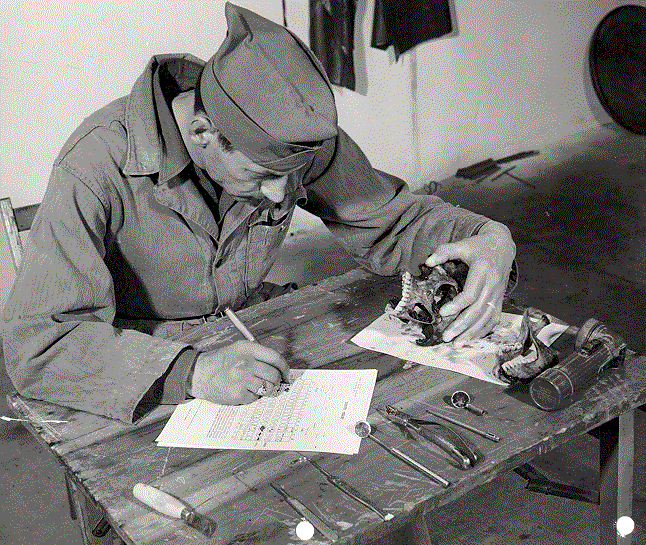
All of the soldiers in the graves registration units battled the psychological horrors they witnessed every day. “Some stared wide-eyed; others had died in the middle of a scream, and their mouths hung open. Others had no face at all,” one soldier said.
That same soldier said that “Not many of us were killed, but we died in different ways.”
But men saw their job as one of extreme importance to their nation; burying its soldiers in the most dignified way possible and doing all they could to identify the dead.
The easiest means of identification was visual, but in many cases, the condition of the body made this impossible. Some had been stuck in burnt-out vehicles or involved in planes crashes. Often all that was left of these soldiers was teeth, dog tags, and melted jewelry.
Uniforms could be used for identification if they contained their name or service number. In addition, some bodies were known as their comrades had witnessed their death.
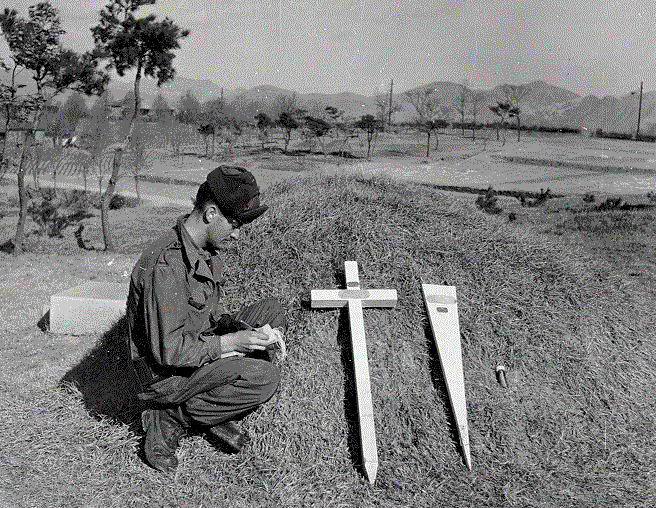
The winter spanning the end of 1944 through to early 1945 brought a new set of challenges to the Graves Registration Service. Shovels no longer penetrated the soil, and moving bodies was much harder as they were frozen solid. It was said that the bodies froze so fast after they fell, that when they thawed they started bleeding as they had only just died. The bodies had to be warmed up before burial so they could be properly positioned.
Pockets were harder to search, and the dead’s muscles would suddenly contract, causing one to sit bolt upright.
When the war ended, tens of thousands of soldiers were sent back home. However, the job of the Graves Registration Service was far from over. Bodies still littered Europe and needed to be collected, identified, and buried. Families decided whether they wanted their relative to be returned to them, or to be buried alongside their comrades in cemeteries like the Normandy American Cemetery and Memorial near Omaha beach.
More From Us: Strange Military Truces and How They Happened
Although the morbid work of the Graves Registration Service is often overshadowed by the more glorious and heroic actions of those who fought in the battle, they should never be forgotten, as they ensured the proper treatment and handling of the nation’s dead.
